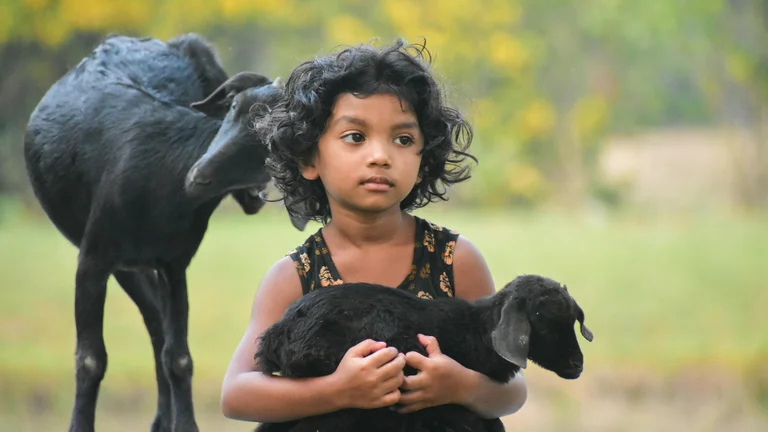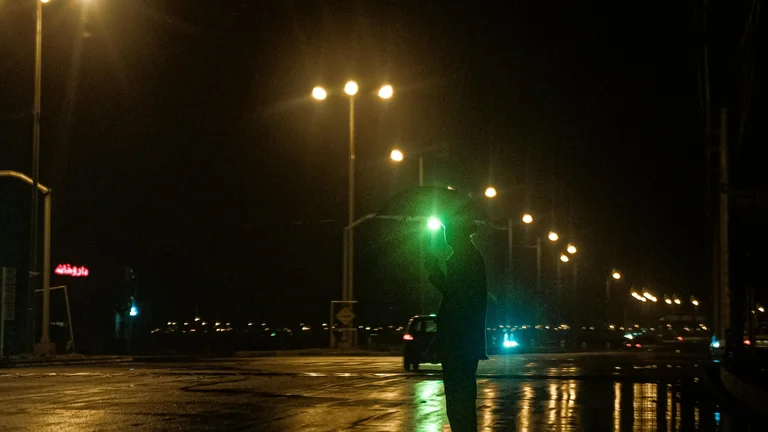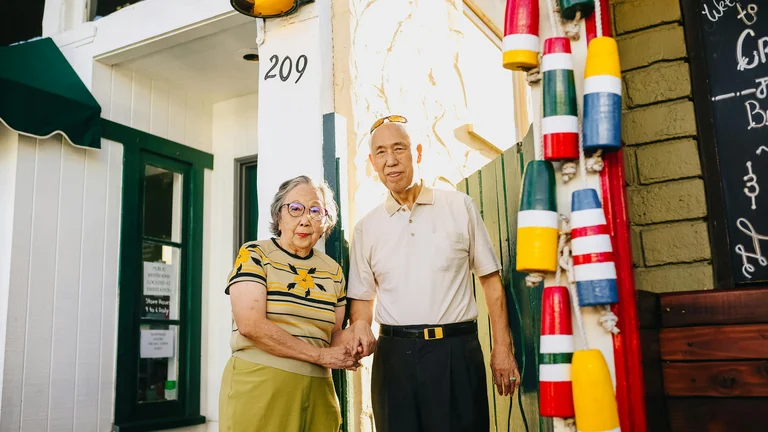Iconic Bicycle Ride Scenes in Classic K-Dramas

Throughout the history of Korean dramas, bicycle rides have been used as powerful visual metaphors that depict a variety of emotions and character developments. These scenes are not merely about the act of riding a bicycle; instead, they often symbolize freedom, innocence, romance, and pivotal turning points in the storyline. For example, in the classic romance drama "Reply 1988," the use of bicycles to show the interactions between the main characters offers layers of nostalgia and warmth that resonate with audiences across ages. The bicycle in that drama becomes a device to traverse both the physical and emotional landscapes, representing youthful exploration and the simplicity of neighborhood life.
Similarly, in "My Mister," a bicycle ride scene conveys more than just transportation; it encapsulates the complex emotional burdens the characters carry, offering a moment of quiet reflection and a subtle shift towards healing. The slow movement of the bicycle juxtaposed with the fast pace of modern life signifies a yearning for slower, more meaningful experiences. The deliberate framing of these scenes—often shot during the golden hour with soft lighting—adds a cinematic layer that elevates the symbolic weight of the simple act of riding a bike.
Bicycle scenes aren't restricted to mere symbolism but also serve narrative functions such as character bonding and plot progression. In "Twenty-Five Twenty-One," several memorable bicycle scenes illustrate the evolving relationships between characters, capturing both their physical movements through shared spaces and their emotional journeys. These scenes often take place on quiet roads or small alleys, emphasizing intimacy and connection away from the hustle of urban settings.
In most K-Dramas, the bicycle ride carries a dual function: it represents personal freedom and also serves as a catalyst for relationship development. The dynamic visuals of motion paired with dialogue or shared silence enable these intimate moments to resonate profoundly with viewers. With detailed cinematography focusing on the characters’ expressions while riding—the feeling of breeze, the rhythm of pedaling—bicycle rides transcend simple transportation and gain narrative depth.
These iconic scenes frequently take place against backdrops rich with cultural or scenic significance, such as cherry blossom-lined streets, tranquil riversides, or bustling night markets. This enhances the aesthetic appeal and emotional impact of the scenes. The bicycle ride marries the natural environment and the characters’ emotions, creating unforgettable moments engraved in the collective memory of K-Drama fans worldwide.
Technical and Cinematic Elements Behind Effective Bicycle Rides
Creating memorable bicycle ride scenes in K-Dramas requires precise technical expertise combined with creative insight. Directors and cinematographers use various techniques to evoke particular feelings and to strengthen the narrative impact. One of the dominant approaches includes the use of tracking shots, often employing steadicams or drones, that follow the characters seamlessly, creating a fluid connection between movement and emotion. The camera work enhances the immersive sensation of riding without causing motion sickness for viewers, a delicate balance requiring skillful framing and stabilization.
The choice of lens and depth of field plays a significant role in directing audience attention. Shallow depth of field focusing on characters' facial expressions while blurring the background immerses viewers in the intimacy of the moment. Conversely, wide shots showing the surroundings provide context, emphasizing isolation or togetherness depending on the scene’s mood. Natural lighting is often preferred, maintaining authenticity and contributing to the organic feel of the scene.
Sound design in these scenes is subtle yet crucial. The quiet sound of tires on pavement, intermittent bell rings, wind rushing past, and characters’ breathing add layers of sensory detail. These ambient sounds ground the scene, making it more visceral and relatable. The use of soft, minimalist background scores also supports the mood without overpowering the natural sounds or dialogue.
Color grading is carefully tailored to highlight the emotional tone. Scenes conveying hope or happiness usually have warm, pastel tones, while those revolving around conflict or introspection often take on cooler, muted palettes. This post-processing step enhances the emotional subtext, allowing viewers to intuitively grasp the scene's mood beyond spoken words.
Stunt coordination and actor preparation are pivotal since many leads in K-Dramas are not professional cyclists. Choreographing safe but visually appealing rides ensures authenticity and maintains pacing without risking safety. Moreover, costume design is adapted to facilitate ease of movement while preserving character styling, often integrating flowing clothing that interacts dynamically with the motion.
Table: Comparison of Bicycle Ride Scenes Across Popular K-Dramas
| Drama | Context | Symbolism | Cinematography Style | Emotional Impact |
|---|---|---|---|---|
| Reply 1988 | Youthful neighborhood rides | Innocence, nostalgia | Warm tones, handheld shots | A sense of community and warmth |
| My Mister | Solitude and reflection | Healing, slow life | Soft focus, steady tracking | Quiet hope amid hardship |
| Twenty-Five Twenty-One | Romantic development | Growing bond and trust | Wide shots, natural lighting | Tenderness and optimism |
| Because This Is My First Life | Casual rides for bonding | Daily life intimacy | Naturalistic, muted colors | Realism and familiarity |
| Weightlifting Fairy Kim Bok-joo | Youthful fun and friendship | Freedom, playful energy | Vibrant colors, dynamic angles | Joyfulness and lightheartedness |
Emotional and Cultural Significance of Bicycle Scenes
The repeated motif of bicycle rides in K-Dramas reflects its larger cultural resonance in South Korea, where bicycles have historically symbolized mobility and social connection, especially in youth culture. These scenes evoke the simplicity and innocence of earlier times before the overwhelming pressures of adulthood. The bicycle often becomes a metaphor for personal growth, representing milestones in the character’s journey towards maturity and independence.
In the cultural context, bicycle rides conjure a shared memory of communal living and neighborhood interactions. This is particularly evocative for South Korean audiences, who associate bicycles with their own childhoods and experiences growing up in fast-changing urban landscapes. The act of riding side-by-side becomes a visual metaphor for shared experiences, feelings of companionship, and mutual support that transcend verbal communication.
Moreover, bicycle scenes are often paired with themes of first love and friendship. The act of riding together encapsulates moments of vulnerability, trust, and simple joy, making these scenes particularly poignant in series focused on youth or coming-of-age stories. The bicycle becomes an arena where characters express emotions indirectly—through gestures, glances, and the shared rhythm of movement—building layers of unspoken narrative tension and affection.
Culturally, the portrayal of bicycle rides in K-Dramas also reflects societal views on health, environment, and affordability. Bicycles symbolize a return to eco-friendly, healthier forms of transportation, often idealized against the backdrop of hectic city life dominated by cars and technology. This underlying commentary adds depth to scenes showing characters choosing bicycles over other means, subtly prompting viewers to reflect on lifestyle choices.
List: Key Factors Making Bicycle Scenes Memorable in K-Dramas
- Symbolic use of bicycles conveying emotions such as freedom, innocence, and love.
- Careful cinematography balancing intimacy and scenic beauty.
- Use of natural surroundings that reinforce themes of nostalgia or serenity.
- Sound design that incorporates ambient and diegetic sounds to anchor realism.
- Character interactions during rides building narrative tension or bonding.
- Aesthetic costume and prop choices enhancing authenticity.
- Timing scenes to moments of narrative turning points or character revelation.
- Visual motifs such as passing under cherry blossoms or crossing bridges that carry cultural symbolism.
Influence of Bicycle Scenes on K-Drama Popularity and International Appeal
Bicycle ride scenes contribute significantly to the international appeal of K-Dramas by showcasing relatable moments of youth and romance that transcend cultural boundaries. Their universal symbolism appeals to diverse audiences, enhancing emotional accessibility regardless of language or nationality. Many foreign viewers cite such scenes among their favorite memories because they highlight quiet, serene moments in dramas that contrast with otherwise intense storylines.
Social media plays a substantial role in amplifying these scenes’ popularity. Clips of bicycle rides often go viral due to their cinematic beauty and emotional resonance. GIFs, fan edits, and fan art inspired by these moments are widely circulated, fueling fan engagement and enhancing the dramas' cultural footprint internationally. These scenes often become iconic representations of whole series, featured prominently in promotional materials and opening credits.
From a marketing perspective, bicycle scenes are leveraged to foster a sense of nostalgia and warmth, encouraging viewers to emotionally invest in characters early in the show. The universal theme of freedom and exploration that comes with bicycle rides attracts younger audiences, particularly millennials and Gen Z, who relate strongly to themes of self-discovery amidst societal pressure.
International fans also frequently visit filming locations associated with famous bicycle scenes, merging fiction with reality through so-called “drama tourism.” These sites often become pilgrimage spots for fans, further embedding bicycle ride scenes into the cultural and economic fabric surrounding K-Dramas.
Step-by-Step Guide: Recreating Iconic K-Drama Bicycle Ride Scenes
For fans and filmmakers alike, recreating bicycle ride scenes from popular K-Dramas requires attention to detail and understanding of the scene’s emotional core. Here is a step-by-step guide to designing such sequences for maximum impact:
- Choose the Setting: Select a scenic yet simple backdrop that complements the mood—like tree-lined streets, quiet alleys, or waterfronts.
- Plan the Cinematography: Decide on shot types—tracking shots, close-ups, or wide establishing shots. Consider lighting; golden hour is ideal.
- Prepare Sound: Record ambient sounds such as wind, bicycle chain noise, and street ambiance. Opt for minimal background music to preserve realism.
- Design Costumes: Reflect characters’ personalities and the scene’s tone through outfits that allow fluid movement and natural interaction with the environment.
- Coordinate Actor Movement: Practice smooth riding sequences, ensuring safety and conveying emotional intent through expressions and body language.
- Integrate Symbolic Props: Use items like bicycle baskets, flowers, or personal belongings to deepen narrative symbolism.
- Post-Production: Apply color grading consistent with emotional tone, and synchronize audio elements for immersive effect.
- Final Review: Assess continuity, emotional resonance, and pacing to ensure the scene enhances the overall narrative.
These steps ensure that bicycle ride scenes are not only authentic but also rich in storytelling potential, connecting deeply with audiences as much as iconic K-Drama examples.
Expanded Analysis: Psychological Impact of Bicycle Ride Scenes on Viewers
Bicycle ride scenes in K-Dramas stimulate viewer emotions beyond immediate aesthetics. Psychologically, these scenes tap into a collective longing for simpler times and embody feelings of liberation and control. The act of riding a bicycle is associated with childhood memories and autonomy, evoking nostalgia and a sense of personal agency.
Viewers often experience a calming effect from watching these scenes, thanks to the rhythmic visual and auditory stimuli. This calming response plays a therapeutic role, especially in dramas where tension and drama dominate other scenes. The bicycle ride provides a subconscious reminder of balance and harmony, enhancing engagement with the characters' journeys.
Furthermore, bicycle scenes boost empathy by placing viewers in the characters’ perspective—feeling the breeze, sharing the journey, and participating in moments of silence or conversation. This immersive empathy fosters stronger emotional bonds between audience and character, an essential factor in the sustained popularity of K-Dramas globally.
Beyond individual responses, these scenes also encourage social connectedness as fans discuss and share their interpretations online, forming communities that celebrate the multifaceted meaning of such seemingly simple moments. The shared cultural experience of these bicycle ride depictions contributes to a collective psychological affinity towards K-Drama narratives as a whole.
Common Themes and Motifs in Bicycle Ride Scenes
Across numerous K-Dramas, recurring themes and motifs define the essence of bicycle ride scenes. These motifs, loaded with narrative purpose, help deepen viewers’ understanding of character arcs and story developments.
One prevalent theme is transition—bicycles symbolize movement from one life phase to another or from emotional confusion to clarity. Scenes often mark the beginning or end of a significant character transformation, using the literal motion of riding to represent metaphorical changes.
Another common motif is companionship. Riding side-by-side becomes a silent language expressing trust, mutual support, or tentative romantic interest. This portrayal of togetherness without intrusive dialogue ensures that emotions are conveyed subtly yet powerfully.
Isolation is also explored when characters ride alone, highlighting introspection or loneliness. The solitary bike ride emphasizes distance from others and represents inner emotional struggles, often coupled with sweeping landscape shots to underline the character’s smallness in the world.
Natural elements like blooming flowers, flowing rivers, or rustling leaves frequently appear alongside these scenes, symbolizing renewal, hope, and continuity. The bicycle’s motion harmonizes with these motifs, reinforcing cyclicality and life’s journey.
Future Trends: Bicycle Scene Evolution in Upcoming K-Dramas
As K-Dramas continue evolving in narrative complexity and production quality, bicycle ride scenes are expected to grow in conceptual depth, integrating emerging cinematic technologies and storytelling methods. For instance, augmented reality (AR) and virtual reality (VR) applications may allow viewers to experience these rides from characters’ perspectives more immersively.
Moreover, contemporary K-Dramas are beginning to address more diverse social issues using bicycle rides as visual metaphors. Themes such as urban sustainability, gender roles, and mental health are increasingly woven into these scenes, reflecting broader societal conversations. Expect future dramas to depict bicycling not only as romance or nostalgia but also as a statement on ecological consciousness and personal resilience.
Expanding urban landscapes with innovative cycling infrastructure will influence location choices, offering fresh backdrops—like bike-sharing stations, eco-parks, and smart cities—that resonate with younger, environmentally aware audiences. This development opens new avenues for storytelling, where bicycle scenes embody progress and modernity alongside tradition.
Production techniques will also see increased experimentation. Use of drone technology for dynamic overhead shots, slow-motion captures highlighting intricate expressions, and multi-camera setups to showcase simultaneous perspectives will enhance the cinematic richness of bicycle ride sequences.
Incorporating Bicycle Scenes in Narrative Structure
Bicycle ride scenes in K-Dramas function strategically within narrative structures to maximize emotional payoff and plot development. Writers and directors position these scenes carefully, often at junctures where the storyline shifts or deepens.
Early in a series, a bicycle ride may introduce character traits such as youthful innocence, ambition, or introversion. Mid-series scenes often utilize cycling to dramatize relationship dynamics with visual metaphors—for example, moments of falling behind or catching up symbolize conflict or reconciliation. In climactic sequences, the bicycle scenes can act as cathartic releases or pivotal realizations.
Sometimes, these scenes serve as narrative bookends, appearing at the beginning to establish atmosphere and again near the end to signal resolution or new beginnings. Such symmetry creates a coherent visual thread tying the storyline tightly, enhancing viewer satisfaction. The pacing within these sequences—slow and contemplative or lively and adventurous—complements the overall rhythm of the drama.
Bicycle rides also offer unique opportunities for character monologues or conversations that reveal backstories or internal conflicts without heavy exposition. The physical activity paired with dialogue facilitates naturalistic exchanges that deepen character development organically.
Second Table: Emotional Tones and Narrative Functions of Bicycle Scenes
| Emotional Tone | Narrative Function | Typical Visual Style | Example Drama |
|---|---|---|---|
| Joyful and Playful | Builds friendship and youthful energy | Bright colors, dynamic camera angles | Weightlifting Fairy Kim Bok-joo |
| Melancholic and Reflective | Shows internal conflict and healing | Muted tones, slow tracking shots | My Mister |
| Romantic and Tender | Develops love interest and trust | Soft lighting, close-ups on hands/eyes | Twenty-Five Twenty-One |
| Nostalgic and Warm | Evokes memory and community bonds | Warm filters, handheld natural shots | Reply 1988 |
| Isolated and Pensive | Highlights loneliness and introspection | Wide empty roads, cold color grade | Because This Is My First Life |
FAQ - Memorable K-Drama Bicycle Ride Scenes
Why are bicycle scenes so common in K-Dramas?
Bicycle scenes are common in K-Dramas because they symbolize various themes such as freedom, innocence, transition, and emotional connection. They offer a versatile narrative tool that underscores character development and relationship dynamics in a visually compelling way.
How do bicycle ride scenes enhance the storytelling in K-Dramas?
Bicycle ride scenes enhance storytelling by providing a dynamic yet intimate setting for character interactions, enabling subtle emotional expression through movement and body language. They also visually symbolize themes of growth, escape, togetherness, or solitude, adding depth to the narrative.
What technical elements contribute to the effectiveness of bicycle scenes in K-Dramas?
Effective bicycle scenes rely on techniques such as smooth tracking shots, natural lighting, ambient sound design, precise color grading, and choreographed actor movements to create immersive, emotionally resonant moments that align with the story’s tone.
Are bicycle ride scenes culturally significant in Korean dramas?
Yes, bicycle ride scenes carry cultural significance as they evoke nostalgia tied to Korean youth and community life. They reflect broader societal themes related to simplicity, mobility, and environmental consciousness within Korea’s urban and rural contexts.
How can viewers experience K-Drama bicycle scenes beyond watching the shows?
Viewers often engage with these scenes through fan discussions, social media sharing, fan art, and visiting filming locations associated with iconic bicycle scenes, thus extending the emotional and cultural connection beyond the screen.
Bicycle ride scenes in K-Dramas are iconic for symbolizing freedom, youth, and emotional connection. Through careful cinematography and cultural motifs, these scenes deepen storytelling and character development, making them essential and memorable elements that enhance the drama's emotional impact globally.
Bicycle ride scenes in K-Dramas serve as rich, multi-layered storytelling devices that blend technical cinematic craft with profound cultural and emotional symbolism. Their ability to convey complex feelings such as freedom, love, nostalgia, and introspection through seemingly simple rides distinguishes these moments as some of the most memorable in Korean drama history. These scenes not only enrich character development and narrative depth but also contribute significantly to the global appeal of K-Dramas, resonating with diverse audiences worldwide. As the genre evolves, bicycle rides will continue to feature prominently, adapting to new thematic explorations and cinematic innovations while maintaining their timeless, evocative charm.






